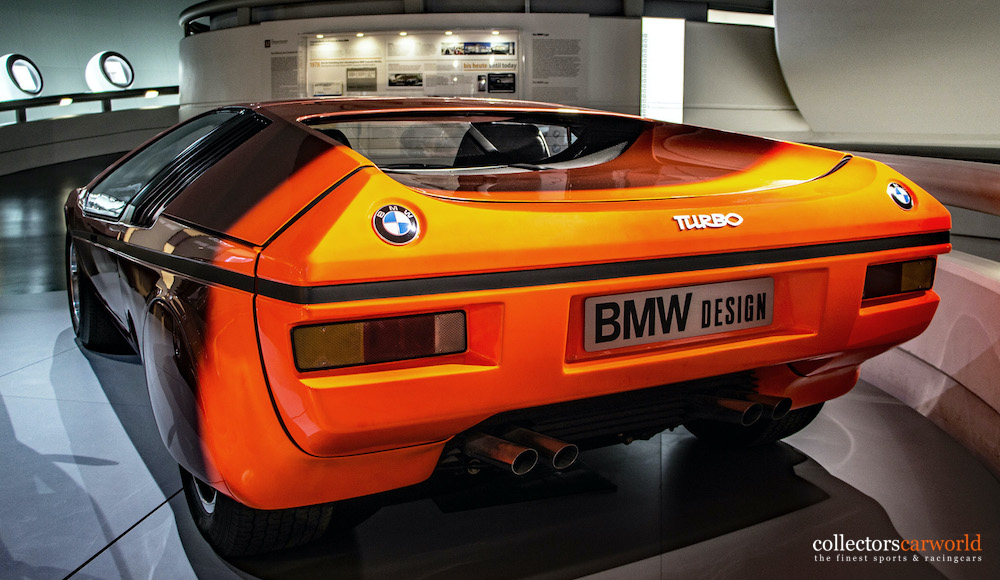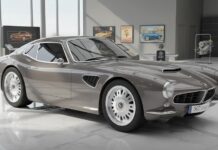As part of the opening ceremonies of the 1972 Summer Olympics in Munich, local manufacturer BMW unveiled the ‘Turbo Concept.’ It was very much intended as a showcase for the latest engineering and safety technologies and also underlined that the German manufacturer had left the difficult period of the 1960s well behind. At the time few could have imagined that the striking concept car would form the basis for the company’s first and to date only supercar.

BMW’s head of design Paul Bracq was given a free rein and considering he had just designed the 300+ km/h TGV train, something very exciting could be expected. Clearly inspired by the latest generation of (Italian) supercar, the French designer came up with a wedge-shaped mid-engined machine. Even though the Turbo Concept had a thoroughly modern shape, Bracq had managed to incorporate the classic ‘kidney grille’ in the design. Other striking exterior design cues included the covered rear wheels and the BMW badges on both rear-end corners.
Somewhat paradoxally the supercar shaped design included the latest safety technology. The nose and the tail of the car were separate foam-filled pieces mounted on telescopic steel beams. These were intended to take most of the impact during a collision. The Turbo Concept also came equipped with a safety steering system and a radar system to warn the driver for cars coming too close. In addition the very low centre of gravity also made for an inherently safer design. The gull-wing doors on the other hand, did not.
Mounted transversely behind the passenger compartment, the four cylinder engine gave the car its name. Originally derived from the popular 2002 model, the two litre unit received a Turbo charger to boost power to a healthy 200 bhp. In combination with the very slippery shape this power figure does not make the BMW claimed top speed of 250 km/h sound over ambitious. In detuned form the blown four cylinder engine entered production in the 2002 Turbo, which was built in small numbers in 1973 and 1974.
Find out more on ultimatecarpage.com
To top it all off BMW had the Turbo Concept painted in a highly unusual two-tone paint scheme, possibly the emphasize the collision friendly bumpers. Paul Bracq’s designed received universal acclaim and was named the ‘Concept Car of the Year’ by the Revue Automobile Suisse. A second, non running, example was built for motor show use in 1973, but it was not until 1978 that a ‘production version’ was announced. This M1 was only very loosely based on the Turbo Concept design and excluded most of its revolutionary features.
The iconic Turbo Concept has survived and is still in full running order, although it is quite difficult to get going. There is no mechanic or electric choke on the prototype engine, so it has to be fully heated before it can be driven. With its front mounted radiator and long waterlines that can take well over 15 minutes. A further problem is that the engine has no silencers, so the warming up process will get the attention of much of the neighborhood. Not surprisingly, the car is only driven very rarely.
The Turbo Concept is shown above at the 2008 Concorso d’Eleganza Villa d’Este. It was displayed to commemorate the M1’s 30th anniversary alongside a brand new wedge-shaped, but not operational concept, fittingly dubbed the ‘M1 Hommage’.
Find out more about our photographer Rainer Selzer










